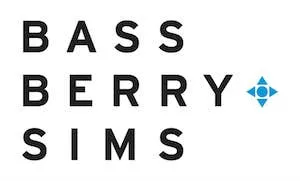On December 21, the Government Accountability Office (GAO) dismissed a protest by ELS, an unsuccessful bidder on a Department of Defense (DOD) task order opportunity, concluding that it did not have jurisdiction to consider it.
GAO reasoned that because "the value of the task order [was] below $25,000,000 . . . it does not have jurisdiction to consider the protest." One would think the $25 million threshold applicable to protests of DOD task orders (the threshold is $10 million for civilian agency task orders) would be easily understood and simple to apply. However the ELS decision shows it may not always be as straightforward as it sounds.
The Procurement at Issue
The Navy's Naval Sea Systems Command (NAVSEA) issued a Request for Task Order Proposals (RTOP) to holders of the SeaPort Next Generation indefinite-delivery, indefinite-quantity (IDIQ) contract seeking to procure administrative and engineering support services. The RTOP sought to award one cost-plus-fixed-fee task order to a successful offeror that represented the best value to the Government.
In response to the RTOP, the Navy received two proposals: one from the protestor and the other from the intervenor. The protestor's proposed price was $30,478,050, and its total evaluated price was $30,566,297. The intervenor's proposed price was $24,848,774, and its total evaluated price was $25,116,561.
Discussion
In part in an effort to reduce protests, the Federal Acquisition Streamlining Act of 1994 (FASA), which has been amended, prohibits the protest of task and delivery order unless the protest asserts that the order (1) "increases the scope, period, or maximum value of the contract under which the order is issued" or (2) is over $25 million (DOD orders) or $10 million (civilian orders). 41 U.S.C. §4106(f)(1) and 10 U.S.C. §3406f(2). In addition, FASA stripped the Court of Federal Claims' (COFC) jurisdiction over protests of FAR Part 16 orders in excess of the thresholds, giving that authority exclusively to the GAO. 10 U.S.C. §3406(f)(2); 41 U.S.C. §4106(f)(2). While COFC still has jurisdiction to hear protests that FAR Part 16 orders increase the scope, period, or maximum value of the contract under which the order is issued, such COFC protests are rare.
Here, no evidence suggests the order increases the scope, period, or value of the contract, but the protestor did argue that the order was "valued in excess of" $25 million. Specifically, ELS argued that "when determining the value of a task order for jurisdictional purposes, the focus [should be] on the total anticipated funds to be paid to the contractor, regardless of what the awarded value of the task order is." The contractor contended that the value cannot be solely determined by the offeror's proposed costs, "but rather based on the total anticipated funds expected to be paid to the contractor." Because the intervenor's total evaluated price exceeded the $25 million threshold—and the Navy expected to pay more than $25 million—ELS maintained that the GAO had jurisdiction to hear the protest.
In response, the Navy insisted that the intervenor's proposed price of $24.8 million, which was the awarded amount, and not the evaluated price of $25.1 million, was the relevant number to be used for GAO's jurisdiction determination. Under the government's interpretation, the GAO should look to the actual value of the awarded task order rather than the total anticipated funds expected to be paid.
The GAO, agreeing with the Navy, explained that "the determining factor in this protest is the amount of the contract award, which is below our jurisdictional threshold." Pointing to FAR 52.232-20, GAO pushed back on the protestor's argument that the figure GAO should use is the total evaluated cost by pointing out that the government is not obligated to reimburse the contractor for costs incurred in excess of the contract amount. "In short, the usual rule is that contract value, for the purpose of determining jurisdiction, will be determined by the amount of contract award, and the facts of this case provide no rationale for departing from this general rule." However, GAO did note that "unusual circumstances" may require GAO deviate from the general rule when procurements involve "unconventional methods for compensating the contractor or an unusual price evaluation technique." However, those circumstances were not present.
Key Lessons and Takeaways for Contractors
While the GAO threshold for review of DOD orders "valued in excess of" $25 million seems clear, the ELS decision provides an important lesson for potential protestors to apply in order to avoid expending unnecessary resources exploring fruitless protests.
The ELS decision explains that the relevant price potential protestors should look at is the actual awarded task order, not the total anticipated funds. With that understanding in mind, contractors should be aware of GAO's interpretation of its jurisdiction when considering whether to protest awards of task or delivery orders under FAR Part 16.
The content of this article is intended to provide a general guide to the subject matter. Specialist advice should be sought about your specific circumstances.

